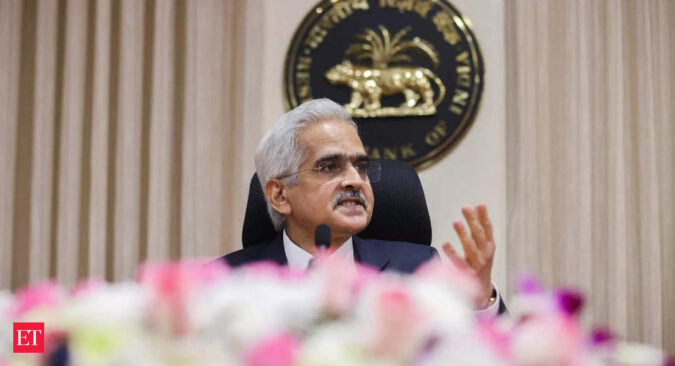Financial stability came to the fore amid turbulence in the international banking industry, but the central bank painted a better picture on economic expansion and outlook on inflation, relying likely on robust farm harvest for the winter-sown crop. The RBI, which began tightening rates nearly a quarter after the Federal Reserve began the exercise last year, has cumulatively raised the cost of funds by 2.5 percentage points in nearly 11 months.
The monetary policy stance, a key variable for future direction on rates and liquidity, was kept at `focusing on withdrawal of accommodation’ to convey Mint Road’s determination to fight inflation, which is showing no sign of durable descent.
The six-member Monetary Policy Committee voted unanimously to keep the policy rates unchanged. On keeping the monetary stance at focusing on withdrawal of accommodation, five members voted for it, with external member J.R. Varma against it.
An ET poll forecast a quarter percentage point increase in the repurchase rate. Bandhan Bank’s Siddhartha Sanyal was the lone economist who predicted a pause. The market was split on the monetary stance with many factoring a shift to neutral.
“While we have kept the policy rate unchanged, it is important to bear in mind that this decision was taken on the basis of our assessment of the macroeconomic and financial conditions with reference to the information available up to today,’’ Governor Shaktikanta Das said in an address. “Our job is not yet finished and the war against inflation has to continue until we see a durable decline in inflation closer to the target. We stand ready to act appropriately and in time.’’
Rates Unchanged Repo rate, or the rate at which the central bank lends to banks, remains unchanged at 6.5%. All the other rates, such as the reverse repo rate and the lending rate under the penal Marginal Standing Facility, also remain where they are.
The RBI has broken ranks with the developed market central banks, such as the European Central Bank or and the Federal Reserve, and joined the likes of Bank Indonesia and the Reserve Bank of Australia, which have paused on interest rate increases amid turmoil in the financial markets.
“The (tightening) might just be enough was the overarching message from the RBI,’’ said Aurodeep Nandi, economist at Nomura Securities. “This reflects a forward looking monetary policy that takes into cognizance elevated global growth risks, under-control inflation trajectory, and the need to wait and watch and assess the impact of the sharp policy tightening already delivered.”
Inflation has been persistent either because of supply chain disruptions, crude price volatility or a surge in global commodity prices due to war in Ukraine last year. Although some pressures have abated, inflation is still rising at triple the target in many developed economies, forcing their central banks to raise borrowing costs above the upper inflation tolerance limit of 6% in India.
The central bank had to write to the government on how it intended to bring it down to the targeted 4 percent. And bringing it to the target is of utmost priority despite the pause, said Das.
“ Projections for 2023-24 point to a softening in inflation, though the disinflation is likely to be gradual and protracted, given the rigidity in core or underlying inflation pressures,’’ said Das.
Consumer price inflation rose to 6.44% in February, mainly because of rising food prices that account for nearly 40% of the Consumer Price Index (CPI) basket.
Inflation, GDP Growth
But the central bank scaled down the inflation forecast for the current fiscal to 5.2 percent from 5.3 percent and the Gross Domestic Product is expected to grow 6.5 percent from 6.4 percent even though multilateral agencies cut due to a likely global recession.
While inflation has been a problem, the blow up of banks such as the Silicon Valley Bank and Credit Suisse have brought financial instability into monetary policy making. The Federal Reserve and the US Treasury Secretary Janet Yellen have been sending conflicting signals on whether the bank rescues are the norm and blanket guarantee on deposits.
“Bank failures and contagion risk have brought financial stability issues to the forefront,’’ said Das.
RBI insiders and the external members have been delivering conflicting assessments of the inflation-growth scenario and the continuous interest rate increases. Prof. J.R. Varma has been dissenting on rate increases as he was in favour of waiting to assess the impact of the steep increases in the past year. In the February meet, Ashima Goyal joined in her dissent to rate increases.
“While the numbers may not really be significant, the messaging is subtle that the MPC expects the economy to fare well on both counts this year,’’ said Madan Sabnavis, economist, Bank of Baroda. “The RBI does believe that both the domestic and external sectors are doing well to warrant such optimism.’’
